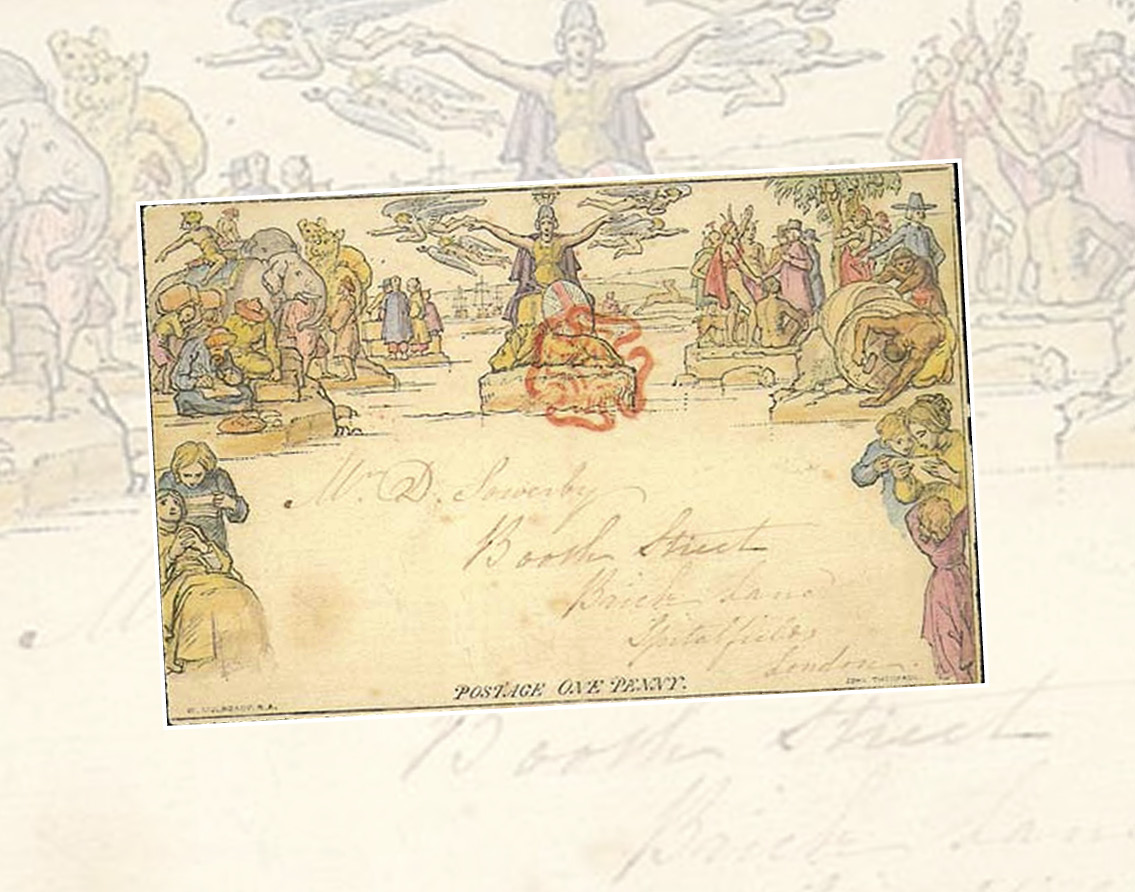06 May 2021
|
The Penny Black became valid for postage on 6 May 1840. The simple stamp revolutionised how the nation communicated, millions were used on postage, and countries around the world soon followed Britain’s lead. Today it’s an icon, a simple but beautifully elegant symbol of Victorian innovation, and a ‘must-have’ on any collectors’ checklist. Find out more about the 1d black with our ten top facts.
Discover more about the Penny Black
1. No country name
The 1d Black is the world's first adhesive postage stamp - as such the 1840 stamp and all of Britain's subsequent stamps do not include the country's name.
![]() 2. Invented by Rowland Hill
2. Invented by Rowland Hill
Rowland Hill is credited with inventing the postage stamp after issuing a pamphlet on postal reform, he described the idea as '...a bit of paper just large enough to bear the stamp, and covered at the back with a glutinous wash'.
3. The public were asked to design the stamp!
A 'Treasury Competition' was run in the lead up to the stamp issue, asking members of the public to design the new labels. None of the designs were deemed good enough and a portrait of Queen Victoria was used.
4. The Mulready envelope was expected to be more popular
The authorities also issued a postal stationery lettersheet at the same time as the Penny Black. Called 'Mulreadys' after the artist whose illustration was used on them, the sheets were expected to be more popular than stamps, but were widely ridiculed by the public and often mocked by other illustrators. The lettersheets were withdrawn within months.
5. It's not that rare!
A reported 68,808,000 copies of the stamp were printed, meaning the Penny Black is not a rare stamp. However, examples in mint condition and with neat margins can command very high prices.
6. The postal workers had to cut the sheets into stamps
With no perforations, each Penny Black stamp was cut from the sheets of 240 using scissors, meaning the margins of each stamp can vary greatly, depending on the dexterity of the postal worker.
7. The ultimate first day covers
The Penny Black went on sale on to the public on 1 May 1840, although it was not valid for use until 6 May, 1840. Despite this, some examples of the Penny Black stamp were used before 6 May; such covers are extremely rare and most desirable.
8. You can tell where the stamp appeared on the sheet
The letters in the bottom corners of the Penny Black stamp refer to the position of the stamp within the sheet of 240. The very top left stamp in the sheet would have the letters 'AA', moving right, the next stamp would have 'AB', moving down, the stamp would have 'BB' and so on. Find out more about plating Penny Blacks.
9. The 2d Blue followed just two days later
The second adhesive postage stamp was the 2d Blue, which followed on 8 May, 1840.
10. The stamp quickly met postmark problems
The 'Maltese Cross' cancellation used on the Penny Black stamps proved difficult to see and prompted the introduction of the 1d Penny Red stamp, which replaced the Penny Black in 1841.
Further reading…
How to collect Penny Black stamps
The Penny Black is the most famous stamps in the world. Discover how to collect the many varieties of the 1d stamp, a classic British stamp, in our technical guide ...Continue reading
Your guide to Penny Red stamps
The Penny Red stamp was Britain's second stamp design and replaced the famous Penny Black. Discover much more about the Penny Red stamp in our expert stamp guide …Continue reading
The 1890 Penny Post Jubilee
John Davies, immediate past president of the Great Britain Philatelic Society, provides a guide to the 1890 Penny Post Jubilee, which marked fifty years since the introduction of Uniform Penny Postage and the world's first stamp. …Continue reading








 2. Invented by Rowland Hill
2. Invented by Rowland Hill
